ASB’s high tech office breaks workplace traditions
- 18 December, 2013 07:00
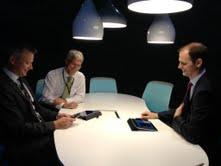
The 8.30am meeting lasted for three hours, after which he left the building for lunch. He returned for one-on-one meetings held on separate floors, then headed home.
“I never used a desk the whole day because I was always in meetings, doing other things. I went to the area that suits the work I will do. That is activity-based working,” says Jones.
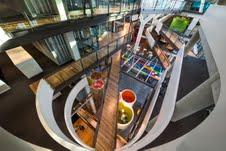
ASB implemented activity-based working or ABW when it moved to North Wharf, its head office on Wynyard Quarter. The building in Auckland’s Viaduct was designed to encourage the 1400 staff to work where, and with who, it suits them each day, and with the technology of their choice.
Jones says North Wharf is one of three main buildings of ASB in Auckland. The other two are C-Drive in Albany and on Dominion Road, which houses its contact centre.
“In practice, people can work seamlessly between the three buildings,” he says. “I spend two days a week in Albany, and spend the rest of the week in the North Wharf.” There are days he will be attending a meeting at the Commonwealth Bank headquarters in Australia, and Jones says he can work in the airport lounge like he was in the office.
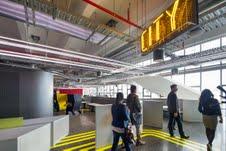
James Bergin, ASB chief architect, technology and innovation for the Enterprise Services Division, is also based at North Wharf, but some members of his team are working on C-Drive. In the morning, he will connect to his remote desktop from home, and go to either buildings.
In the past, he or his team members will travel from Albany to the city or vice versa. “With this environment, I just call them up,” he says. Bergin says he has one or two videoconference meetings every day. The videoconferencing suites are also connected to the parent company Commonwealth Bank of Australia (CBA). “We can just dial in and we can have high quality videoconference suites around the building.”
The virtual desktop environment is “where technology kicks in”, says Bergin. The entire structure is virtualised running Windows 7 so everyone in the building has access to their virtual desktop. Everyone has a laptop or an iPad depending on what device they have chosen. Other staff who have a corporate laptop have also brought their iPad to work and connect these to the wireless system.
Bergin says the team is already exploring Windows 8 for the virtual desktop infrastructure, and from an infrastructure point of view, there is nothing that will stop having other devices as BYO. Jones notes some staff have Android phones and tablets that they are bringing to work.
The wireless infrastructure relieved the need for a cable environment, and freed staff from permanent and individual workstations. “Under the desk is a thin client. All you can see is a screen and a keyboard. So literally you can sit down in any of these workspaces and pick up exactly where you left off,” he says.
Each staff member, however, has a locker which he or she can personalise. The staff member can choose where to work, from public spaces known as “boathouses” to free working spaces known as “neighbourhoods”.
Workspaces that house different business units are grouped into “neighbourhoods”. In each neighbourhood there are a variety of high, low and medium focus work settings and people are able to select which of these best suits the activity being worked on and change accordingly throughout the day.The work spaces are designed to ensure a passer-by will not be able to hear any of the discussions. Staff have free access to audiovisual screens,
The different collaboration areas provide greater flexibility to work with other people while wireless technology and mobile devices drastically decrease reliance on paper.
Next: In the neighbourhood
Page Break
North Wharf is a stunning building towards Auckland’s waterfront, with a structure mirroring Auckland’s volcanic cones and lighthouses. “It is designed to be very visually diverse, very much like a village concept,” says Bergin.
There are two buildings joined by a glazed multi-level walkway over Te Wero Lane. It has a total of 18,000 square meters over six floors, with each floor larger than a standard rugby pitch. Aluminium louvres arranged in a pattern of fin and leaves in front of the north of the building deflect heat and light without obstructing the view of Auckland Harbour.
At the entrance to the building is the state of the art Innovation Lab. Here, customers can perform all regular banking functions they have come to expect at any ASB branch. The laboratory has a foreign exchange desk and a 24-hour ATM. Noticeably missing are paper brochures or traditional teller counters. Instead, customers can use a raft of interactive technology designed to help them explore new ways of banking, says Bergin.
Related: Inside ASB’sInnovation Lab: A bank branch without tellers and print brochures.
There are gesture-based, interactive 103-inch plasma screens operated by Microsoft Kinect motion sensors. Customers can navigate through digital brochures, real-time rates and videos using gestures and without touching the screen.


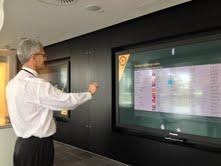
Some of the technologies in the Innovation Lab are prototypes like the touch-enabled ATM – one of the first of its kind to be installed in the Southern Hemisphere. This prototype will allow ASB to explore merging the traditionally separate ATM, Internet, and teller-based platforms.
Inside the building, the stairs and lifts are positioned in a way everyone can see what is happening, and none of them can be found in corners, says Jones. “When you go down, you can see who is moving into the building and what is happening.”
The help desk – called iConnect - is likewise an open counter, where staff can borrow accessories for their smartphones and laptops.
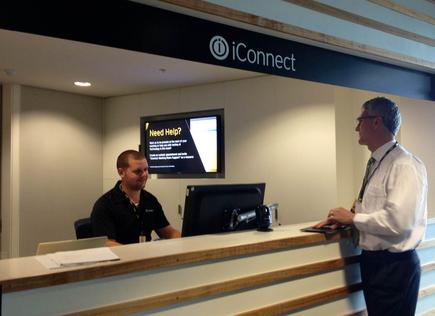
The building has earned a five-star rating from the New Zealand Green Building Council. Integrated technology links light, security, communication channels and climate control to maximise their use while minimising energy consumption.

Bergin says the system, for instance, pushes fresh air into the building and displaces hot air out on top, a “chimney effect”. The full fresh air displacement system is a healthier option than the traditional airconditioning system.
Jones observes people tend to work on the right hand side of the building where the sun is in the morning during the winter. It is also warmer in the upper level of the building so people go there during the cold season, and people who want cooler areas to work will go downstairs.
The initial business driver for the move was the end of lease for the 31-storey ASB Bank Centre in the central business district. Options were explored, says Jones, around whether ASB will stay in the building or build something new, and if yes, where it will be and the format.
Jones says CBA was already doing something on activity-based working at the time. “It all came together.”
Jones says there were three tracks for work: technology, people and property. “Clearly a lot of the upfront work was in the property area.”
ABW is not new, and Bergin cites some of the buildings that have inspired the concept for North Wharf were the Interpolis insurance company and the Microsoft office in the Netherlands. Bergin says ASB officials visited similar these buildings, including the Macquarie Bank in Australia.
Next: Paperless office? Try ‘paper independent’
Page Break
“Before we moved, we implemented a SharePoint based system and all the physical files for various businesses were loaded and scanned,” says Jones. There were company files that were kept, but 18 months before the move, millions of pages were scanned by a team in the Dominion Road office.
“The idea was nobody had to print anything,” says Jones, as he and Bergin move to an area housing a cluster of printers. “If you walk around there is very little paper,” observes Bergin.

The paperless environment is ideal, he says, but it is a bit of a dream. “I have everything I need here, why do I need to print?”
“The desire to print is removed, you can’t be paper independent without removing the demand for paper,” says Bergin.
Bergin says in the first few weeks, people were taking backups and printing documents “just in case”. He says this stopped as people know they can work seamlessly across the building.

ASB is also implementing ‘follow me printing’ where the bank pays its multi-function device supplier only for images they print. The document is printed only when the employee scans the printer. Bergin explains that a printing job “expires” or is cancelled if it is not picked up within two days. In the latest statistics, he says 30 per cent of print jobs were abandoned. “Not only do we see printing drop but people are actually thinking they need to print it and realise they don’t need to print it.”

Bergin himself does not recall printing any document since moving in the building six months ago, and Jones recalls printing a document only five to six times during that period.
Indeed, Jones observes that he and Bergin have been standing beside the cluster of printers for 10 minutes in a busy part of the building and none of the printers has been spewing documents all this time. Bergin grins, “Incredible, isn’t it?”
Related:
At Vodafone New Zealand, work is viewed "as an activity, not a place". This means staff can work independent of location.
Today’s offices are not necessarily measured by square metres and may not even exist at all. Is this the harbinger of tomorrow’s workplace?
IT’s other growing footprint – office space
Tech firms join finance as top sectors by demand for property in Auckland: CBRE
Follow Divina Paredes on Twitter: @divinap
Follow CIO New Zealand on Twitter:@cio_nz
Sign up for CIO newsletters for regular updates on CIO news, views and events.

